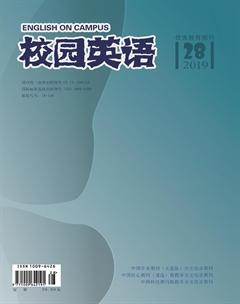Speech act theory
【Abstract】Speech act theory does have a place in the study of pragmatic, which was first introduced by John Austin in the late 50s of the 20th century Austin later put up a new theory that the sentence fell into three types namely locutionary, illocutionary, and perlocutionary acts. The study mainly embarks on something about the indirect speech act that closely related to illocutionary.
【Key words】speech act; indirect speech act; daily communication
【作者簡介】赵静文(1995.03.21-),安徽人,南京师范大学在读研究生,研究方向:外国语言学及应用语言学。
Speech act theory is an important theory in the study of pragmatic, which was first introduced by John Austin in the late 50s of the 20th century. Traditionally philosophers were paying more attention in the truth value of the sentences. The reason is that they think a sentence in context was used either to state a face or to describe a state of affair. And there was no other functions. However, later Austin claim that there are two types of sentences: performatives and constatives. In his How to Do Things with Words, Austin (1975) argues that some sentence do not describe things such as ‘I bet you sixpence it will rain tomorrow. So the speaker is really doing things when utter these sentences instead of just describing the state of affairs.
With the development of the society and linguistic, later on, Austin gave up his distinction of performatives and constatives. He made a new theory that the sentence fell into three types namely locutionary, illocutionary, and perlocutionary acts.
A locutionary act is the act of uttering words, phrases, and clauses. It is the act of saying something.
Let s look at an example: The soup is a little bit weak. The locutionary act performed by the speaker is that the utterance of the sentence consist of all the words ‘the, ‘soup, ‘is, ‘a, ‘little, ‘bit, ‘weak, which expressed the words literally mean in a correct, understandable English pronunciation. The illocutionary act performed by the speaker is that ask the husband or his/her friend or the waiter to get him/her some salt, or make a complaint, depending on the situation.
Generally linguistics are more interested in illocutionary act, for it is consistent with the true intention of the speaker. John Searle, an American philosopher linguist, one of the most important and significant contribution Searle has made is that he was the one who first put forward the indirect speech act and made a classification of illocutionary acts. Searle (1972) defined it as ‘cases in which one illocutionary acts is performed indirectly by way of performing another. The mismatch between the basic language forms and their typical functions in communication.
Whats more, after Searle proposed the indirect speech act, he argued that a person is performing two speech act simultaneously when a speaker is using indirect language, primary speech act and secondary speech act. The primary speech act is the goal the speaker want to reach and the secondary speech act is the means by which the speaker used. For example, if a student ask his classmate to go to the cinema tonight, the classmate answer this invitation by saying ‘I have to study for an exam. According to Searle, the primary act is the act of rejecting his suggestion of going to the cinema and the secondary speech act is the act of making a statement that he has to study for an exam tonight. According to Searle (1972), there are five types of categories of illocutionary acts, representatives, directives, commissives, expressives, declarations. It would be impossible to provide a full catalogue of all the illocutionary acts which may be performed in English. Hence, the five general types almost cover the commonly used utterances in our daily life. Note that each type share the same illocutionary point, but differ in their strength. Focusing on the illocutionary aspects of utterance, we can have a deeper study of the linguistic theory.
As what we discussed above, we can easily reach a conclusion that indirect speech acts are of great importance in our communication. Also it makes the conversations more implicated in most of the cases. Because they require the hearer to understand the true meaning delivered by the speaker through the inference of the context and common knowledge. If the hearer dont have the linguistic knowledge combined with background and grammatical knowledge, the intention of the speaker cant be recognized correctly. It is obvious that the language learner should not only know the literal meaning of a sentence but also its illocutionary act. Only in this way can we perform accurately, correctly and appropriately.
References:
[1]Austin, J. L. How To Do Things With Words[M]. Harvard University Press,1975.
[2]Li, W. Indirect Speech Acts[J]. Journal of Zunyi Normal College, 2001.

